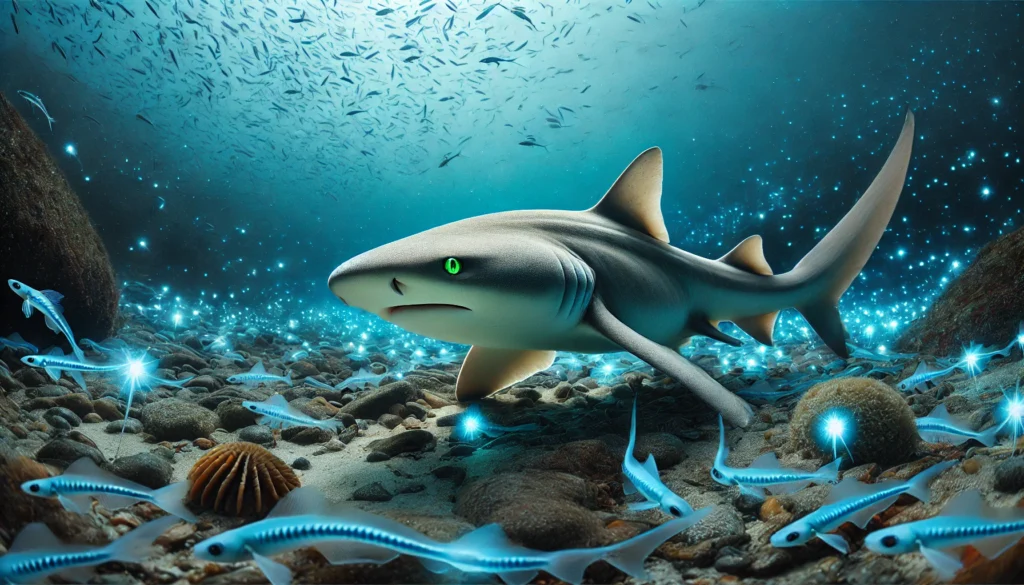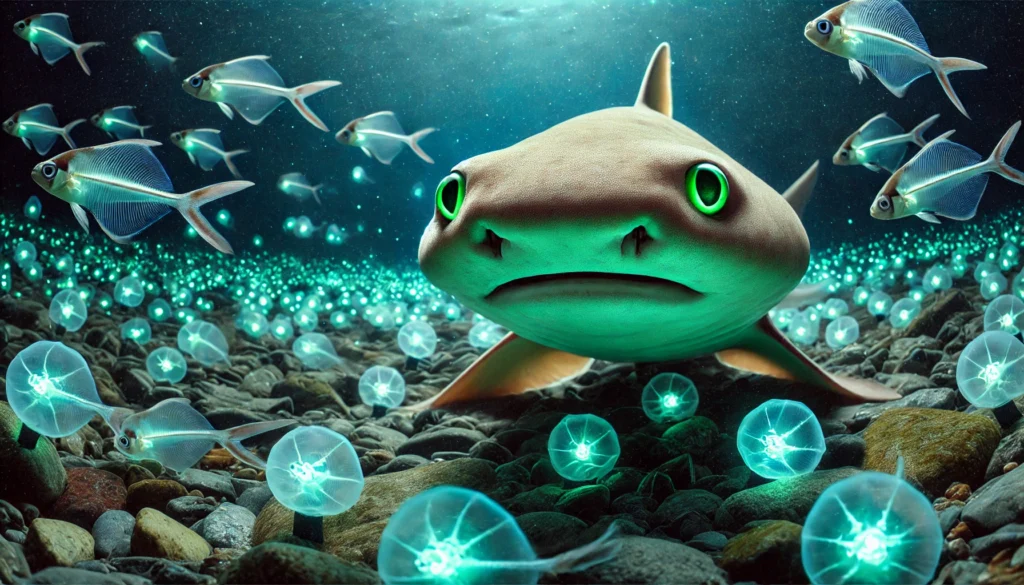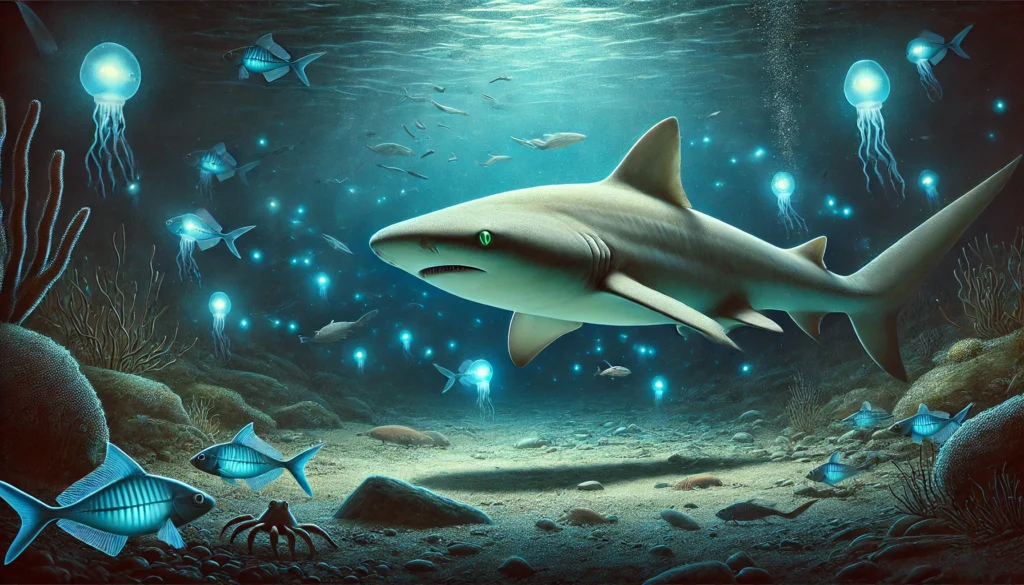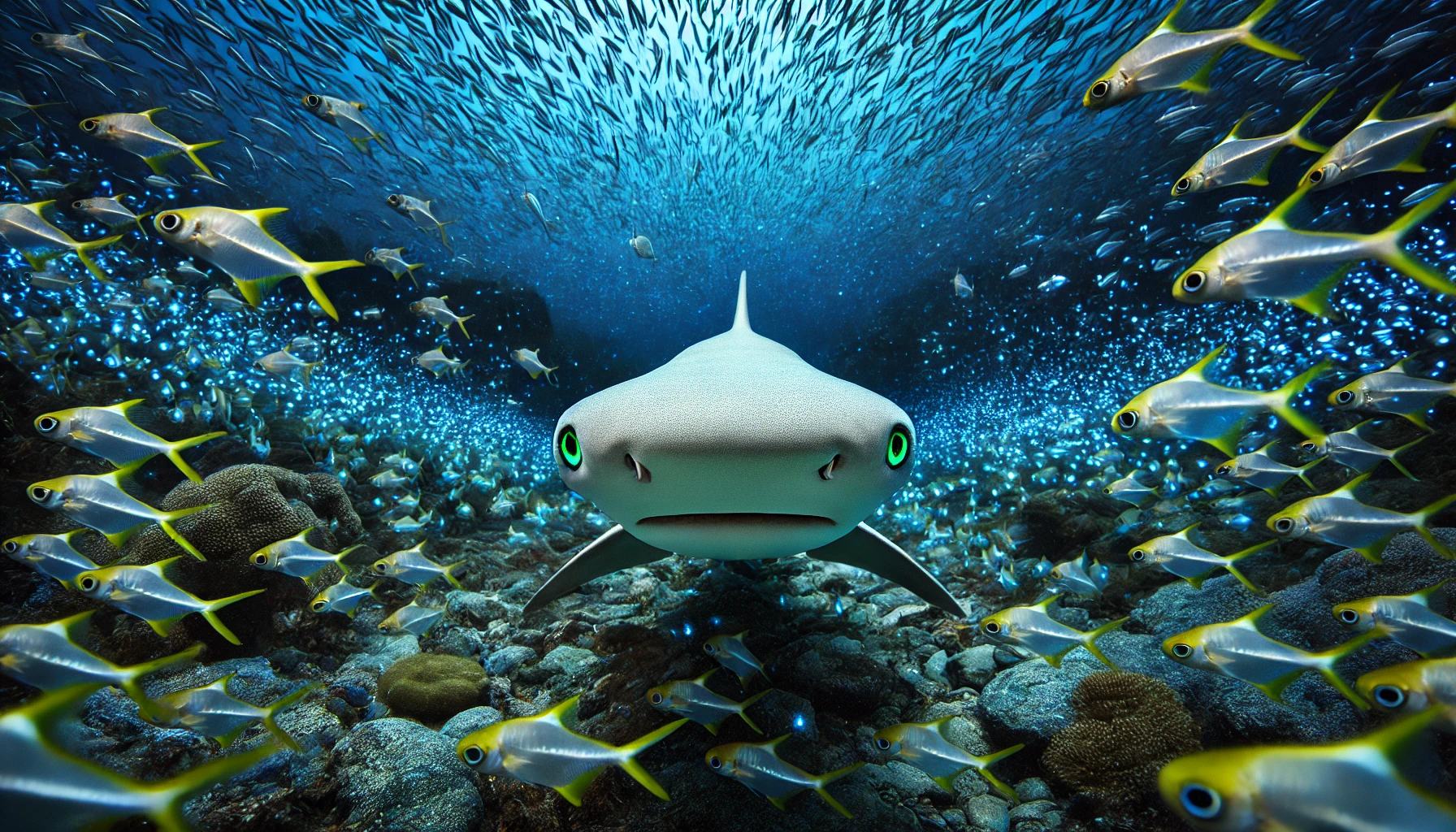The dumb gulper shark (Centrophorus harrissoni) is a unique and rare deep-sea species. Known for its fascinating adaptations to the dark, cold depths of the ocean, this shark is not well-known but plays an important role in its ecosystem.
In this guide, we’ll explore the shark’s physical features, diet, habitat, behavior, reproduction, and current conservation status, providing you with a comprehensive look at this elusive marine creature.
Taxonomy and Nomenclature
Scientific Classification
The dumb gulper shark belongs to the genus Centrophorus, a group of deep-sea sharks often referred to as gulper sharks. Its full scientific name is Centrophorus harrissoni. The species was named after Harrison, a reference to the first individuals who documented its unique traits.
Common Names and Etymology
While it’s primarily known as the “dumb gulper shark,” this species is also sometimes referred to as “Harrison’s deep-sea dogfish.” These names reflect its behavior and the fact that it’s often found in deep-sea environments where few creatures venture.
Physical Characteristics of the Dumb Gulper Shark

The dumb gulper shark has several distinct features that make it easy to identify, even though it’s not commonly seen by humans due to its deep-sea habitat.
Size and Dimensions
The dumb gulper shark typically grows up to about 1 meter (3.3 feet) in length, making it a small shark compared to other species. Its small size helps it survive in the limited space of the ocean floor.
Distinctive Features
- Large Green Eyes: One of the most noticeable features of the dumb gulper shark is its large, bright green eyes. These help it navigate the dark, deep waters where light is scarce, allowing it to hunt for prey.
- Flattened Snout: The shark’s snout is broad and flattened, an adaptation that enhances its ability to locate prey by detecting vibrations in the water.
- Dorsal Fins and Spines: The shark has two dorsal fins, with the first being significantly larger than the second. Both fins have short, sharp spines that help protect the shark from potential predators.
- Asymmetrical Caudal Fin: The tail of the dumb gulper shark is asymmetrical, with the upper lobe being longer than the lower one. This fin shape is believed to help with maneuverability in the deep-sea environment.
Habitat and Distribution
The dumb gulper shark is a deep-sea species, primarily inhabiting the waters off the eastern coast of Australia and parts of New Zealand. It thrives at depths ranging from 220 meters (720 feet) to 1,050 meters (3,450 feet). These depths are beyond the reach of sunlight, creating an environment where few predators can survive.
Environmental Conditions
This shark prefers cold, dark waters with a stable temperature. It is adapted to live under high-pressure conditions, which is typical for creatures found at such extreme ocean depths.
Diet and Feeding Behavior

The dumb gulper shark primarily feeds on small fish, squid, and crustaceans, often preying on lanternfishes which are abundant in the deep sea.
Feeding Adaptations
Due to its large eyes, the dumb gulper shark is able to see in low-light conditions, making it an efficient predator. It uses its keen sense of sight and its wide mouth to engulf prey, a behavior suggested by its name “gulper.”
Primary Diet Components:
- Lanternfishes: These small bioluminescent fish are a major part of the shark’s diet. They are found in deep waters and help the shark navigate through the darkness.
- Squid: Squid are another important food source. The dumb gulper shark’s large eyes help it spot these creatures as they drift through the depths.
- Crustaceans: Crustaceans, such as shrimp, are common in the shark’s diet, providing a good source of protein and energy.
Reproduction and Life Cycle
The dumb gulper shark follows a reproductive strategy known as ovoviviparity, where the female produces eggs that hatch inside her body. Females give birth to one or two pups every one to two years.
Maturity and Lifespan
These sharks have a long lifespan, with some individuals living up to 46 years. They take time to reach sexual maturity, which further contributes to their vulnerability as a species.
Growth Rates
The growth rate of the dumb gulper shark is relatively slow, which also limits its ability to recover from population declines.
Conservation Status
The dumb gulper shark is classified as endangered, largely due to overfishing and its slow reproductive rate. Its populations have decreased significantly, and continued conservation efforts are crucial to preventing its extinction.
Conservation Efforts
Efforts to protect the dumb gulper shark include fishing restrictions and the creation of marine protected areas where human activities are limited.
Future Outlook
Without continued protection and sustainable fishing practices, the dumb gulper shark may face further population declines, threatening its long-term survival.
Human Interactions

While the dumb gulper shark is not a threat to humans, it is occasionally caught in fishing nets due to its deep-sea habitat. Commercial fishing activities also pose a threat to its population.
Economic Importance
Although not a target for fishing, the dumb gulper shark’s role in the ecosystem highlights its importance. Its presence helps maintain the balance of the deep-sea food web.
Research and Studies
Ongoing research is essential for understanding the behavior and needs of the dumb gulper shark. Marine biologists are studying its habitat, feeding behaviors, and reproductive patterns to better inform conservation efforts.
FAQs:
What is the primary diet of the dumb gulper shark?
The dumb gulper shark primarily feeds on small fish, squid, and crustaceans, including lanternfishes.
Where can you find the dumb gulper shark?
This shark is found in deep-sea waters off the eastern coast of Australia and parts of New Zealand.
Why is the dumb gulper shark endangered?
It is endangered due to overfishing, slow reproduction, and the degradation of its deep-sea habitat.
How long can a dumb gulper shark live?
The dumb gulper shark can live up to 46 years in the wild.
What are the key features of the dumb gulper shark?
Key features include large green eyes, a flattened snout, asymmetrical tail fins, and a robust body adapted to deep-sea life.
How does the dumb gulper shark adapt to the low-light environment of the deep sea?
The dumb gulper shark has large, sensitive green eyes that help it see in the dark, low-light conditions of the deep sea. This adaptation allows it to detect prey and navigate through the pitch-black depths.
What are the main threats to the dumb gulper shark’s population?
Aside from overfishing, the shark faces threats from habitat degradation, climate change, and the use of deep-sea trawling techniques that disrupt its environment.
How does the dumb gulper shark’s reproductive strategy impact its survival?
The slow reproductive cycle of the dumb gulper shark, with only one or two pups born every 1 to 2 years, makes it difficult for the species to recover from population declines and increases its vulnerability to extinction.
What role does the dumb gulper shark play in its ecosystem?
As a predator, the dumb gulper shark helps maintain the balance of the deep-sea food chain by controlling populations of small fish, squid, and crustaceans.
Can the dumb gulper shark be found in aquariums or displayed in captivity?
Due to its deep-sea habitat and specific environmental needs, the dumb gulper shark is not typically found in aquariums or marine exhibits. Its habitat and survival requirements are difficult to replicate in captivity.
Conclusion:
The dumb gulper shark may not be a well-known species, but its unique adaptations make it an intriguing part of the deep-sea ecosystem.
From its large green eyes to its slow reproductive cycle, this shark faces numerous challenges, including habitat destruction and overfishing. Continued research and conservation efforts are essential to protecting this fascinating species.
recommend article:
Sub-Zero Cl4250sd/S Near Me In Simi Valley – New And Over $10,000!
The Ultimate Guide To The 192-97 Lt1 Cooling System Kit!
Purewage – A Complete Guide To Understanding Its Features And Benefits!
Hqpotner – Your Ultimate Financial Management Solution!
The Ultimate Guide to Ollyhibs – Her Journey, Achievements, and Impac!




